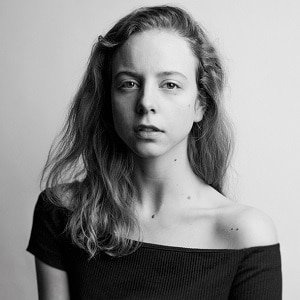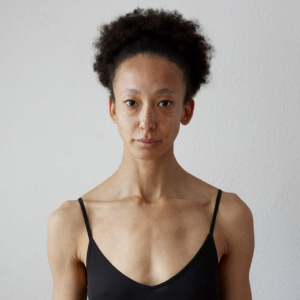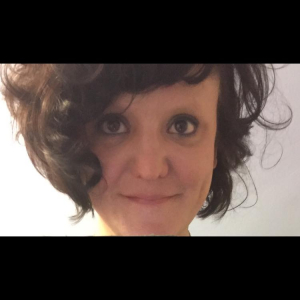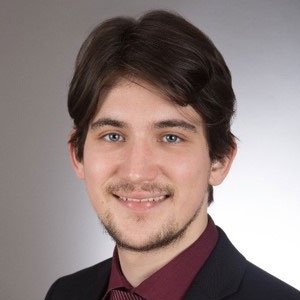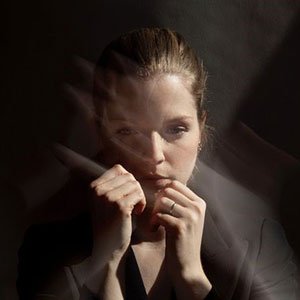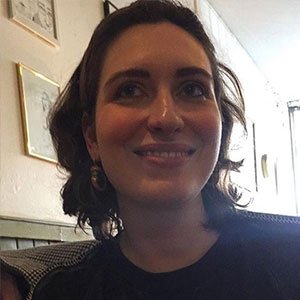On November 3rd, Elisabeth will present her new Movement Study as part of ‘Trois du Trois’, an event by the dance house Trois C-L, Centre de Creation Choréographique Luxembourgeois. This event will focus on the theme of choreographic research and thus, Elisabeth will also speak about her work in the form of a presentation. A documentary of the event will be shown on the Luxembourgish TV channel RTL, together with an interview by Elisabeth.
On October the 10th, Anu Sistonen’s new work OPTIKE will be premiered in Kulturhaus Mersch. I am very excited to be part of this project. The evening will also show work by Luxembourgish choreographers Bernard Baumgarten and Ann-Marieke Hess.
More Infos on:
httpss://www.danse.lu/creations/trois-fois-dance/optike/
Avec OPTIKE, Anu Sistonen se consacre à un projet de recherche sur la mise en lumière et en espace de son langage corporel et artistique. En compagnie de Brice Durand, créateur lumière, elle proposera des pistes pour que la lumière retranscrive le mouvement de façon visuelle. L’idée est de confronter le mouvement dansé à la notion de frontières, de limites spatiales, de lignes de cassure. Le temps de travail permettra d’explorer, d’expérimenter, de manipuler et de développer un langage corporel.
www.anusistonen.com
Partenaires : TROIS C-L, Mierscher Kulturhaus, FEDER – Fonds de Développement Régional dans le cadre du programme INTERREG IV-A Grande Région
STADTKÖRPER
Interview avec Bernard Baumgarten, directeur du Trois C-L, Centre de Création Choréographique, et l’artiste Elisabeth Schilling sur sa nouvelle exposition STADTKÖRPER qui ouvrira ce samedi 3 octobre au Trois C-L.
Comment l’idée t’est-elle venue d’organiser l’exposition STADTKÖRPER?
En 2013, j’ai eu la chance de pouvoir travailler à Berlin. Pendant cette période, j’ai tout de suite remarqué l’architecture éclectique de la ville qui se développe de jour en jour.
Berlin se trouve dans une période de réinvention – les nouveaux bâtiments, les chaînes de magasins ainsi que les rénovations se multiplient. Berlin devient une ville du monde comme Londres ou Paris. On peut y observer une architecture dont la valeur politico-culturelle, qui fût particulièrement significative pour la ville au cours de son histoire, s’amenuise avec le temps.
En me baladant dans la ville, j’ai néanmoins fortement senti que les restes historiques de Berlin étaient toujours bien présents, particulièrement autour de ses vieux bâtiments. Disparates mais omniprésentes, ces traces du passé sont très visibles autour des anciens lieux qui n’ont pas été modifiés. Il s’en dégage une énergie très particulière. C’est à ce moment-là que j’ai vraiment eu envie d’initier ce projet. Je voulais partager ces impressions et réflexions.
Pourquoi as-tu choisi la photographie comme medium?
J’ai choisi la photographie intuitivement. J’ai toujours été intéressée par la photographie en tant que pratique artistique capable de capturer des expressions subtiles et spontanées.
Puis, j’ai eu l’idée d’inviter différents photographes afin de collaborer sur ce projet. J’imaginais que cette collaboration avec plusieurs artistes pouvait enrichir mon sujet de départ. Plus le projet avançait, plus la thématique se renforçait. Artistiquement parlant j’ai bien aimé pouvoir combiner plusieurs points de vue et diverses esthétiques à travers ce seul et même sujet.
Comment as-tu choisi les artistes photographes?
En fait, ça a été très simple. J’ai contacté les institutions photographiques Berlinoises par mail. Ces mails introduisaient mon concept et mes premières inspirations concernant ce projet. Je demandais également aux photographes intéressés de me contacter. Puis, j’ai organisé des interviews afin de rencontrer les photographes personnellement. J’ai collaboré avec tous les photographes intéressés. L’exposition ne révèle pas le travail de tous les photographes qui furent impliqués. STADTKÖRPER ne pouvait contenir tout le travail photographique développé dû à un choix artistique et esthétique précis.
Où les photographies ont-elles été prises?
Les photographies ont été prises dans divers lieux Berlinois. Les photographes et moi-même les avons sélectionnés par à rapport à leur dynamique architectural et leur lien historique que j’ai précédemment évoqués; des restes d’Histoire qui commencent à se faire oublier mais très ostensibles. L’exposition en révèle une sélection. On voit par exemple une vieille gare, Pankow, qui n’est plus utilisée et qui se trouve dans l’ex Berlin-Est. Son architecture est magnifiques et très particulière. Sa superficie est très impressionnante et elle est toute ronde! À peine connue des touristes, cette gare reste un secret bien gardé.
Nous avons également pris des photos aux Frankfurter Tor, un bâtiment immense avec un style architectural typique du Stalinisme. A part ça, les photos ont été prises auprès de vielles maisons dans le centre de Berlin. On peut encore y voir des impacts de bombes de la Seconde Guerre mondiale. Il y a aussi un vieux cimetière, et le vieil aéroport Tempelhof du Sud de la ville.
As-tu l’intention de continuer ce projet ou cette exhibition marque-t-elle sa fin?
Je me suis également posée la question. Tout d’abord je voudrais remercier le Trois C-L pour avoir facilité cette première exposition de STADTKÖRPER. Par la suite, j’ai l’intention de la montrer à Londres, Berlin, et Mayence.
Je me demande aussi comment ce projet pourrait se développer. Il y a de très belles photographies qui ne s’intégraient pas bien au format de l’exposition comme elle se présente ici. Je crois que je vais chercher d’autres concepts permettant de respecter leur expression artistique et leur singularité.
Pour ce qui est de Stadtkörper, je me laisse inspirer par mes rencontres à venir. Si je fais la connaissance d’autres photographes intéressés, je suis partante pour continuer STADTKÖRPER et réaliser plus de photographies en rapport avec mes premières inspirations.
Read about my experiences of participating in Candoco Dance Company’s Summer Lab and working with choreographer Alexander Whitely towards his new creation Beheld: httpss://www.candoco.co.uk/news/
In 2013, Elisabeth collaborated with a variety of choreographers in Berlin. The exhibition that resulted from this collaborated can now be seen from the 25th September – 30th October in TROIS C-L, Centre de Création Choréographique Luxembourgois. The event which officially opens the exhibition will take place on the 3rd October in the TROIS C-L.
httpss://www.danse.lu/evenements/3-du-trois/octobre-2015/
STADTKÖRPER
The project STADTKÖRPER was inspired by the architectural city scape of Berlin, which I had the chance of exploring during a stay in 2013. Even though certain parts of the city are marked by new constructions, chains and restorations, the historic traces of the city are omnipresent and hard to overlook. The way in which the energy of these traces, their heaviness and their decay manifests itself in the everyday presence inspired me to try to capture them in the interplay between dance and photography. Dance, an artform of presence, unites with the still image of photography; thus atmospheres, expressions, shapes and impressions are being captured.
The working process was from the very beginning conceived as a collaboration with various different photographers. In all this, I have been particularly interested in the individual approaches of the subject movement, but also in the diverse perspectives on buildings, the city scape, and especially their framing and composition. How does the still image of photography capture what seems to inevitably escape it?
The exhibition shows a selection of images that have been created throughout this project.
Idea & Concept: Elisabeth Schilling
Photographers: Eunsun Cho, Benjamin Kummer, Jenny Fitz, Carolin Ubl, Sandra Pomorin.
Thanks to Hildegard Schilling, Moritz Gansen, Bernard Baumgarten and the whole team of TROIS – CL.
In September Elisabeth will work in Berlin for the performance series ‘Quiet Cue at KINDL’ . Together with the Performance Duo Schaitl / Costa, Elisabeth will create a movement and sound structure that will be performed by 9 international artists.
<strong>»tasks«</strong> – a site-relative, movement and sound structure for 9 performers
Concept and structure by: Jasmin Schaitl & William “Bilwa” Costa
Scores, choreography and performance by:
Fabricio Belzoff (BR/DE), Phoebe Brown (UK), William “Bilwa” Costa (US), Saori Hala (JP), Emily Ranford (AU/DE), Jasmin Schaitl (AT), Elisabeth Schilling (DE/UK), Christian Konrad Schröder (AT), Ieva Savickaitė (LT)
In August, Elisabeth will be joining the London-based dance company Sweetshop Revolution on their Edinburgh Fringe run of their new show ‘I loved you and I loved you’.
During that time, Elisabeth will act as the assistant to the choreographer Sally Marie.
The show can be seen daily from the 23rd-1st August, 6.40pm at The Sanctuary, Zoo Venues, Edinburgh.
More infos on the company’s work and the show:
httpss://www.sweetshoprevolution.com/news/
Elisabeth will perform in the event ‘Blech im Bruch’ with Hannah Ma Dance on July 18th 2015.
Elisabeth will be traveling to Copenhagen where she will choreograph for the International DACI Conference. Her work will be performed around Danshallerne on July 10th. More on the work in artistic work – choreography.
Elisabeth is very excited to be bringing Mara Vivas’ ‘Tryptich’, which has enjoyed a successful premiere at The Place Theatre in in February 2015, back to live.
On June 18th, ‘Tryptich’ will be performed at the Lion&Unicorn Theatre in London as part of GOLive Festival 2015 which has been curated by the prestigious dance critic Donald Hutera.
On June 30th, ‘Tryptich’ will be part of an evening event at London’s Bolivar Hall, which has been curated by Mara Vivas herself.
Tickets: httpss://www.offwestend.com/index.php/plays/view/12998
Newsletter
Subscribe to the e-mail-list





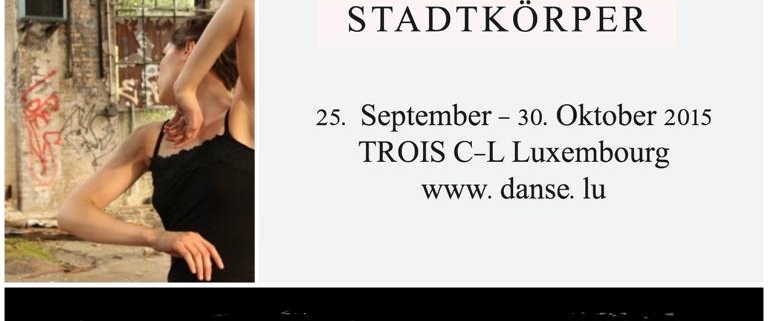


















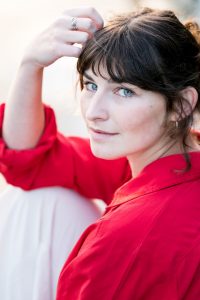






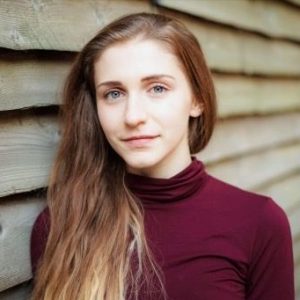

 Lou begann im Alter von 5 Jahren in ihrer Heimatstadt zu tanzen. Im Jahr 2012 schloss sie sich dem Ballet Junior de Genève an, wo sie Werke von renommierten Choreografen wie Andonis Foniadakis oder Hofesh Schechter tanzte. 2016 schloss sie sich dem Kamea Dance Cie in Israel an, wo sie unter anderem Werke des Regisseurs Tamir Ginz, aber auch von Nacho Duato und Marco Goecke tanzte. Seit 2020 ist sie als Gasttänzerin am Grand Théâtre de Genève engagiert und arbeitet seitdem als freischaffende Tänzerin.
Lou begann im Alter von 5 Jahren in ihrer Heimatstadt zu tanzen. Im Jahr 2012 schloss sie sich dem Ballet Junior de Genève an, wo sie Werke von renommierten Choreografen wie Andonis Foniadakis oder Hofesh Schechter tanzte. 2016 schloss sie sich dem Kamea Dance Cie in Israel an, wo sie unter anderem Werke des Regisseurs Tamir Ginz, aber auch von Nacho Duato und Marco Goecke tanzte. Seit 2020 ist sie als Gasttänzerin am Grand Théâtre de Genève engagiert und arbeitet seitdem als freischaffende Tänzerin.
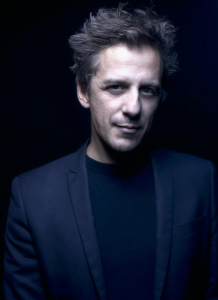
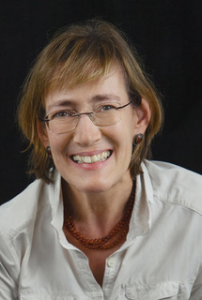
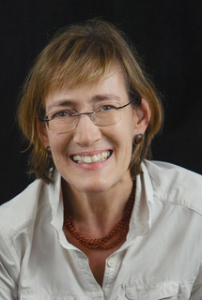
 Johanna Schmitt
Johanna Schmitt Johanna Schmitt
Johanna Schmitt





